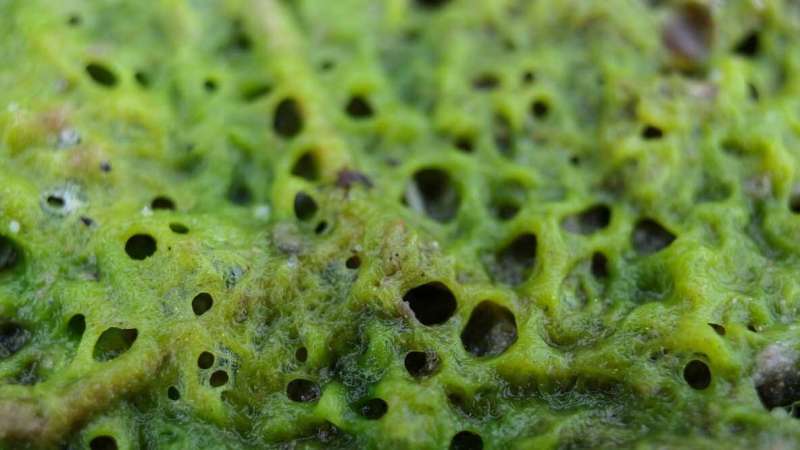This article has been reviewed according to Science X's editorial process and policies. Editors have highlighted the following attributes while ensuring the content's credibility:
fact-checked
trusted source
proofread
Use of algae to support sustainable fertilizer production

Research into algae that could support the sustainable production of biofertilizers has been published by Sheffield researchers. Agricultural challenges such as the sustainable supply of biofertilizers could be solved by new research showing how different strains of algae from similar habitats have different capacities to absorb key ingredients, potentially from wastewater.
Current chemical fertilizers often used in the agricultural industry are not all absorbed by the plants due to the quantities used, leading to some of them being washed away into water bodies such as lakes when it rains. This then encourages algae to grow, which can cause other plant life in lakes to die due to a lack of sunlight and oxygen.
The new research, published in the Chemical Engineering Journal and led by The Department of Chemical and Biological Engineering's Dr. Seetharaman Vaidyanathan, found that different strains of algae from a similar habitat can absorb varying amounts of phosphates and nitrates—key nutrients in fertilizers that also encourage algae to grow—potentially from wastewater streams before they get to lakes.
These nutrients could be removed and reused as biofertilizer, preventing the algae from growing in water bodies.
The difference in how much different strains of algae from a similar habitat can absorb is largely linked to factors such as the supply of carbon dioxide and nitrates and phosphates themselves, though this also varies between the different strains of algae.
The algae also has the benefit of drawing carbon dioxide from the atmosphere and capturing it, which is increasingly important in light of the U.K.'s goal of having net zero carbon emissions by 2050.
It's hoped in the future that the data on how and why the algae absorb different amounts can be used to establish sustainable biomanufacturing routes that include the use of carbon capture via algae.
Indeed, the researchers are now looking to commercialize their findings, and are currently in talks with SMEs.
Dr. Vaidyanathan said, "The article provides evidence of how carbon, nitrogen and phosphorus supply regimes can differentially influence uptake of these elements even in microalgae from a similar habitat, suggesting considerable scope in the development of processes for abstracting these elements effectively from waste streams using microalgae to prevent algal blooms and address development of sustainable alternatives to fertilizers for use in agriculture."
More information: Faqih Shuhaili et al, Nitrate and phosphate uptake dynamics in two halotolerant strains of Chlorella vulgaris is differentially influenced by carbon, nitrogen and phosphorus supply, Chemical Engineering Journal (2023). DOI: 10.1016/j.cej.2023.141433
Provided by University of Sheffield





















